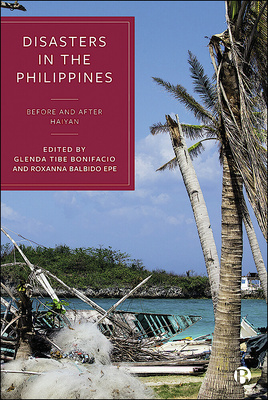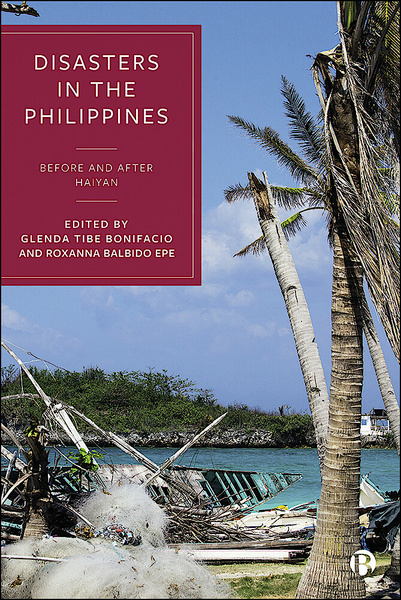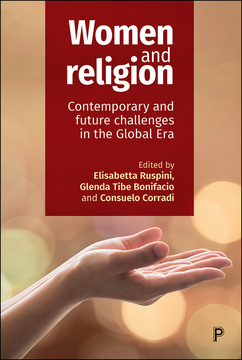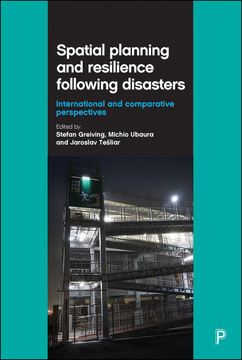Disasters in the Philippines
Before and After Haiyan
Edited by Glenda Bonifacio and Roxanna Balbido Epe
Published
Apr 28, 2023Page count
382 pagesISBN
978-1529222906Dimensions
234 x 156 mmImprint
Bristol University PressPublished
Apr 28, 2023Page count
382 pagesISBN
978-1529222913Dimensions
234 x 156 mmImprint
Bristol University PressPublished
Apr 28, 2023Page count
382 pagesISBN
978-1529222913Dimensions
234 x 156 mmImprint
Bristol University PressBringing together the voices of local scholars in the Philippines, this book offers critical insights into one of the world’s most disaster-prone regions.
The Asia-Pacific region is one of the most vulnerable regions in the world, with the effects of climate change contributing to rising sea levels and increasingly frequent typhoons and floods. Case studies in this book examine such disasters, including the aftermath of 2013 super typhoon Haiyan. Discussions are centered around four themes: women and empowerment, economics and recovery, community and resilience, and religion and spirituality.
Through its analysis, the book demonstrates the scopes, inequities, and inefficiencies of policies and responses, as well as forms of empowerment and resilience, in meeting challenges in disaster-afflicted communities in the Philippines. Its conclusions provide a more nuanced and grounded perspective of policies, practices, and approaches in the sociology of disasters today.
“Bonifacio and Epe’s book casts a large and diverse array of local voices that bring up unique and grounded perspectives on disasters in the Philippines. A worthy read for sure.” JC Gaillard, University of Auckland
Glenda Tibe Bonifacio is Professor of Women and Gender Studies at the University of Lethbridge.
Roxanna Balbido Epe is doctoral candidate at the University of Lethbridge.
Part 1: Disasters in the Philippines: Overview and Responses
1. Introduction - Glenda Tibe Bonifacio and Roxanna Balbido Epe
2. Socio-Economic Impact of Disasters in the Philippines: The First Two Decades of the 21st century - Roberto Ariel Abeldaño Zuñiga
3. State of ICT-use within the Local Climate E-Governance in Metro Manila, Philippines - Xavier Venn A. Asuncion
4. Food and Nutrition Security and Children’s Health Challenges in Extreme Weather Disasters in the Philippines: Understanding the Implications of Gender Roles - Erlidia F. Llamas-Clark
5. Children and Disaster Risk Reduction: Building Resilience from Education, Local Government Units, and Communities - Roxanna Balbido Epe
Part 2: Haiyan Aftermath
6. From Disaster Woes to Economic Windfall: The Case of San Juan Women of Sta. Rita, Samar - Anita G. Cular
7. Disaster Events and Role Transitions: Narratives of Filipino Rural Women after Typhoon Haiyan - Rowena S. Guiang and Ervina A. Espina
8. Women’s Participation in Small Island Resilience Building in Concepcion, Iloilo, Philippines - Dhino B. Geges
9. What Could Have Been? Disaster Impact Analysis of Haiyan in Region VIII - Shiely Anne O. Julian and Francine Blaise M. Loja
10. Gender and Labour Market Regimes in Post-Disaster Haiyan Communities in Leyte - Glenda Tibe Bonifacio
11. No One Left Behind? A Case for Disability-inclusive Disaster Risk Reduction in the Philippines - Kaira Zoe Alburo-Cañete, Corazon Clarin, Marivic Codiñera, and Katherine Velmonte
12. Climate Change and Applied Theater as Post Disaster-Response - Dennis D. Gupa
13. Beyond Bayanihan: Overcoming Myths of Community Resilience in Typhoon Haiyan Post-Disaster Recovery - Yvonne Su, Ladylyn Mangada, and Ara Joy Pacoma
14. Increasing Resilience in Communities affected by Typhoon Haiyan: World Renew’s Response in the Philippines - Grace Wiebe
15. Religion in the Public Sphere in the Aftermath of Typhoon Haiyan - Maria Cecilia T. Medina
Conclusion (For Now): Post-Haiyan Philippines and Beyond - Glenda Tibe Bonifacio and Roxanna Balbido Epe











